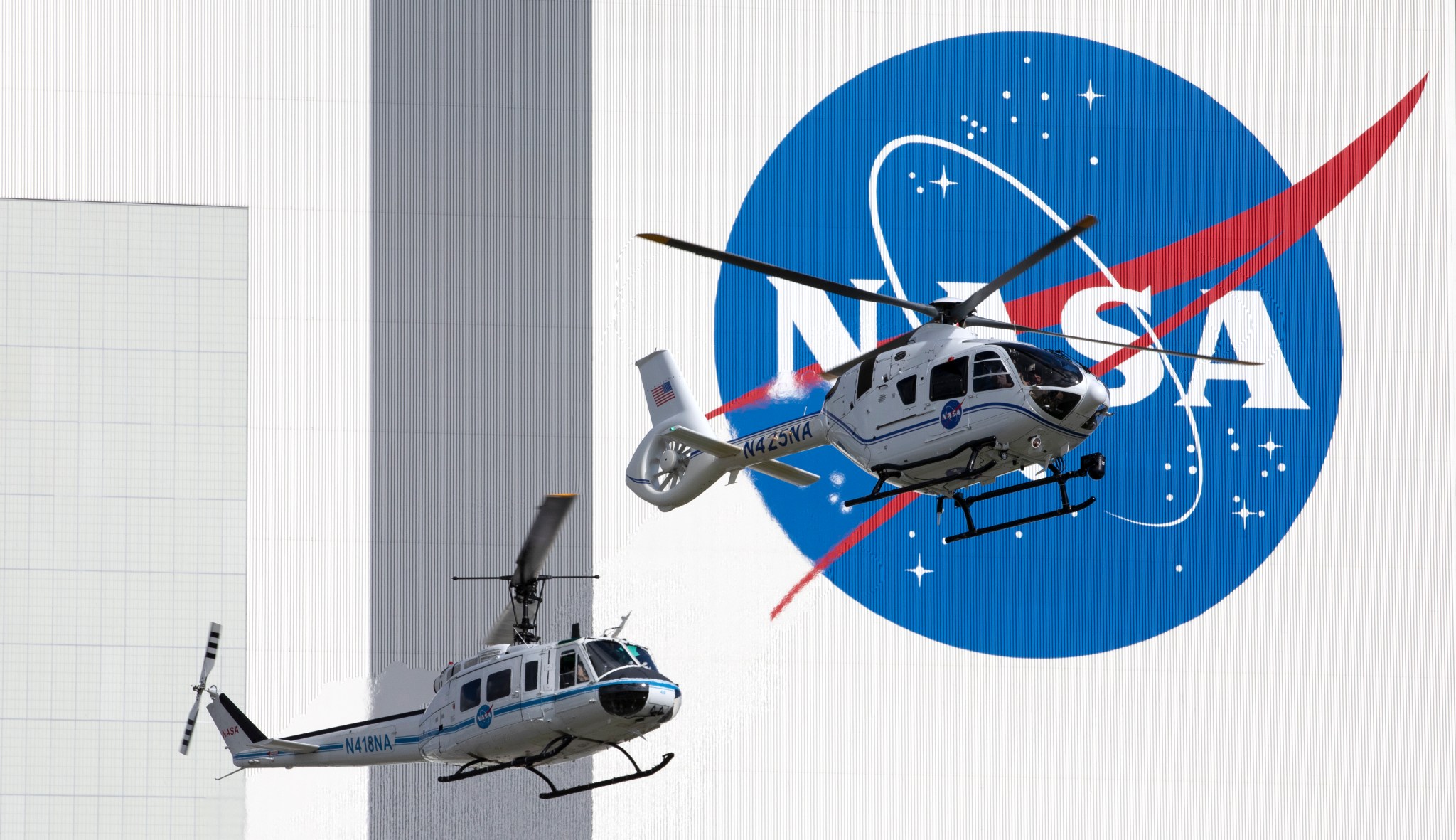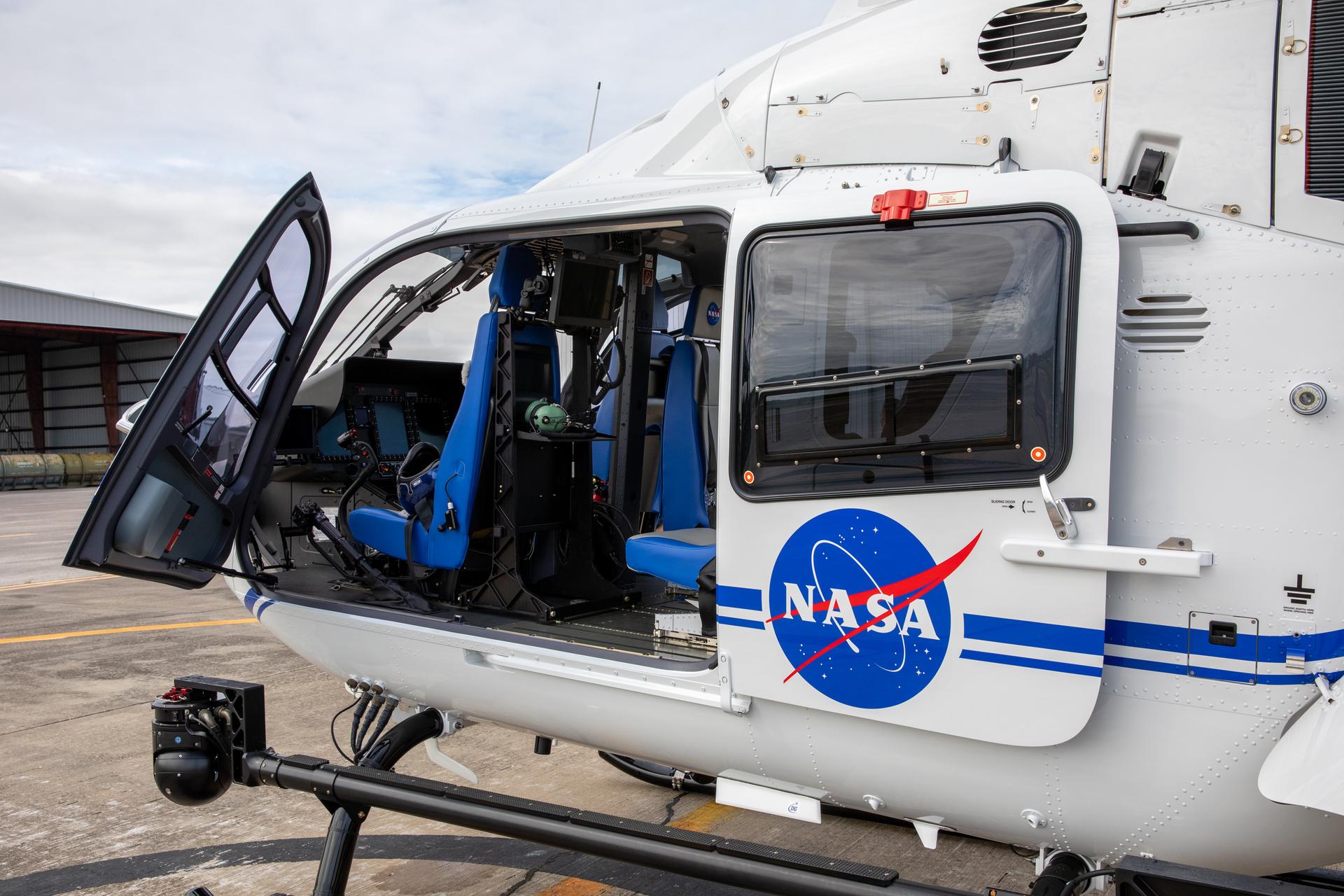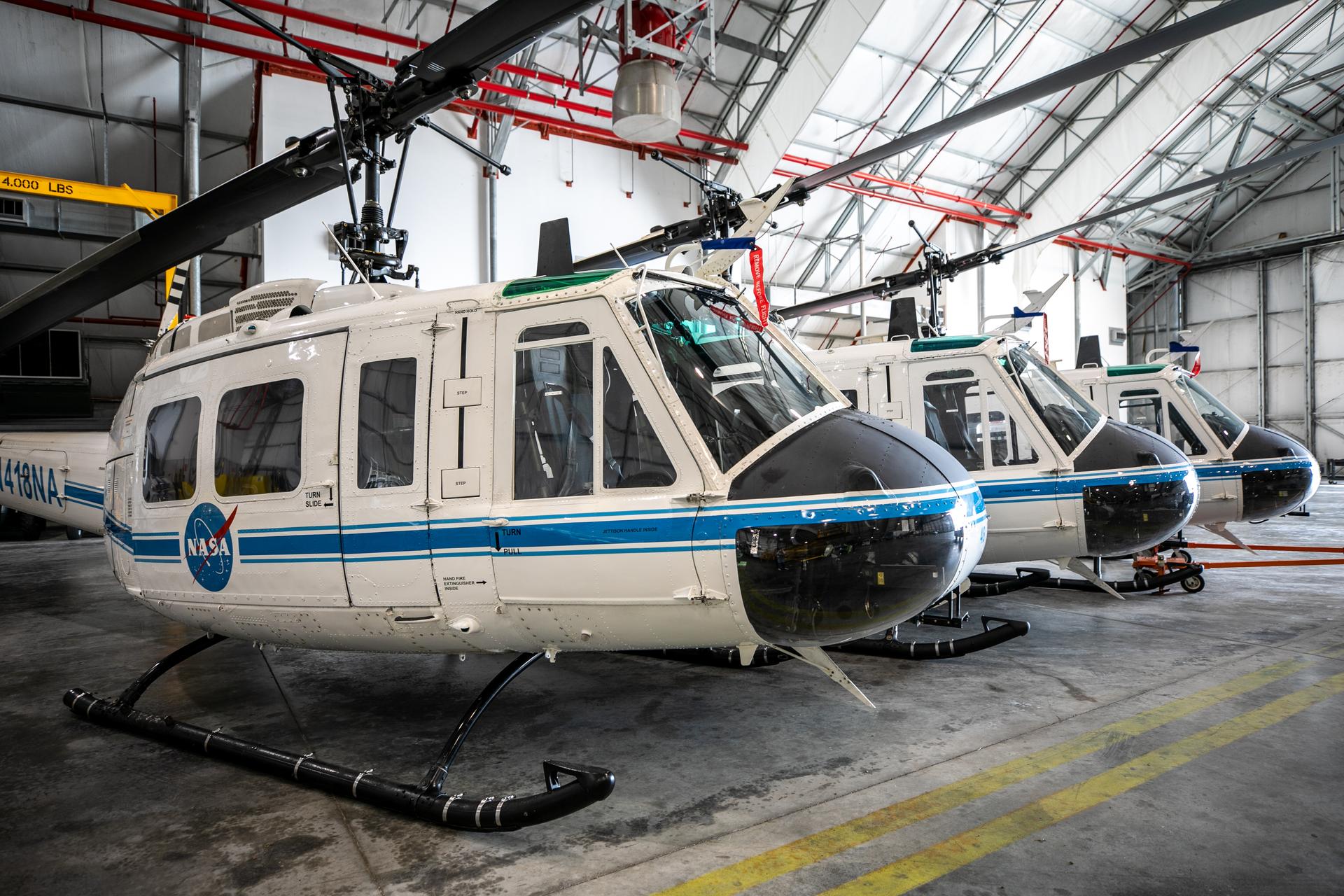
By Danielle Sempsrott
NASA’s Kennedy Space Center
After three decades of service, three Bell Huey 2 helicopters used by Flight Operations at NASA’s Kennedy Space Center in Florida have flown their last flight. Dubbed the workhorses of aircraft, the Hueys are being replaced by a fleet of Airbus H135 helicopters. These new aircraft provide expanded security and medical capabilities while improving Kennedy’s ability to get the mission done safely.
Two of the H135 helicopters arrived at Kennedy on Sept. 30 from Columbus, Mississippi. A third is expected to arrive in spring of 2021 and, once it does, will mark the completion of the fleet’s upgrade. On Oct. 27, in front of the iconic Vehicle Assembly Building, the Bell and Airbus aircraft took to the skies for one flight together before the Hueys departed for good.

“These (H135s) are the first new aircraft that NASA procured since the 80s, maybe the late 70s,” said Dave Ramsey, chief of Flight Operations at Kennedy. “The Hueys have been an icon at Kennedy for so long, we really wanted to do something to document the new and the old together.”
John Graves, also with Flight Operations, noted these H135s can do everything the Hueys could, but they’ll be able to perform those operations more safely. One of the biggest differences is that the H135s have two engines, whereas the Hueys are a single-engine aircraft. This configuration will allow teams to fly further offshore when supporting NASA and commercial launches, which often require teams to go over the Atlantic Ocean for mission requirements and, less commonly, medical rescue missions.
“We’ve been pretty limited on how far offshore we’re comfortable going, just because of that single-engine capability,” said Graves. “With these new aircraft, we can go 20 to 25 miles offshore safely, whereas before, we could go maybe a mile. So that greatly expands that mission skill.”
One important role for the helicopters at Kennedy is the pad abort scenario. With crewed flights to the International Space Station ramping up under NASA’s Commercial Crew Program, and the agency’s goal of sending the first woman and the next man to the Moon by 2024 under the Artemis program, human spaceflight capability has once again returned to Florida’s Space Coast. That means the Flight Operations team must be standing by, ready to support in the unlikely event of an emergency at the pad before liftoff or when the astronauts splashdown in the ocean following their return to Earth.
If there is a medical emergency requiring transportation, these new aircraft are now instrument flight rules capable. This means they can fly directly into clouds – something Ramsey said the team could not do before unless it was an extreme emergency. With this expanded capability, Flight Operations can now fly injured personnel to the hospital – even in unfavorable weather conditions – instead of relying on ground transportation. Ramsey noted the H135s also have built-in mounts for medical equipment to support any hazardous evacuation missions.
“We’re now able to provide the medical staff with greater capabilities on the aircraft, and we can get through conditions we couldn’t get through before to safely evacuate injured to the hospital,” he said. “That’s a great capability and modernization feature that really works for us.”

Managed and maintained by the Flight Operations department, the helicopters are a key component of monitoring Kennedy’s real estate, which spans more than 140,000 acres. The upgraded camera system of the Airbus H135 helicopters includes an infrared camera, allowing security teams to see at night and better see through vegetation. The camera platforms are quieter and more stable, providing better-quality photos and the capability to live stream events to teams on the ground for viewing.
The helicopters also support bio-research efforts. As Kennedy shares its borders with the Merritt Island National Wildlife Refuge, Flight Operations will sometimes fly biologists to count fledgling eagles. The upgraded cameras on the H135s allow teams to zoom in on eagle nests, eliminating the need to get close to the nests in order to perform these counts.
“There’s just a lot of capability with these aircraft that we didn’t have before,” said Ramsey. “I think of the Hueys like an old pickup truck. They’re always there for you when needed and rarely let you down, but they don’t offer the same capabilities of new aircraft. These new H135s will be a dependable replacement that offer those advanced features, ultimately making Flight Operations at KSC safer and more cost-effective.”
In addition to the three new helicopters, Airbus is providing the team with two pilots, a long-term maintenance package, and two mechanics who will stay at Kennedy to perform scheduled and unscheduled maintenance on the aircraft.
The company also has agreed to take the three Bell Huey aircraft in on trade. Ramsey said Airbus will pick up two of the aircraft before the end of the year and transport them via truck to their final destination. When the third H135 arrives, Flight Operations will deliver the remaining Bell Huey to Airbus.
While the team is looking forward to everything the H135s have to offer, Graves mentioned it won’t be easy watching the Hueys leave.
“The Hueys have done everything we’ve asked them to, and they’ve not let us down once. Getting rid of them is a bittersweet thing,” he said. “We’re excited about the new, expanded capabilities and learning something new, but it’s tough to see the Hueys go.”

























